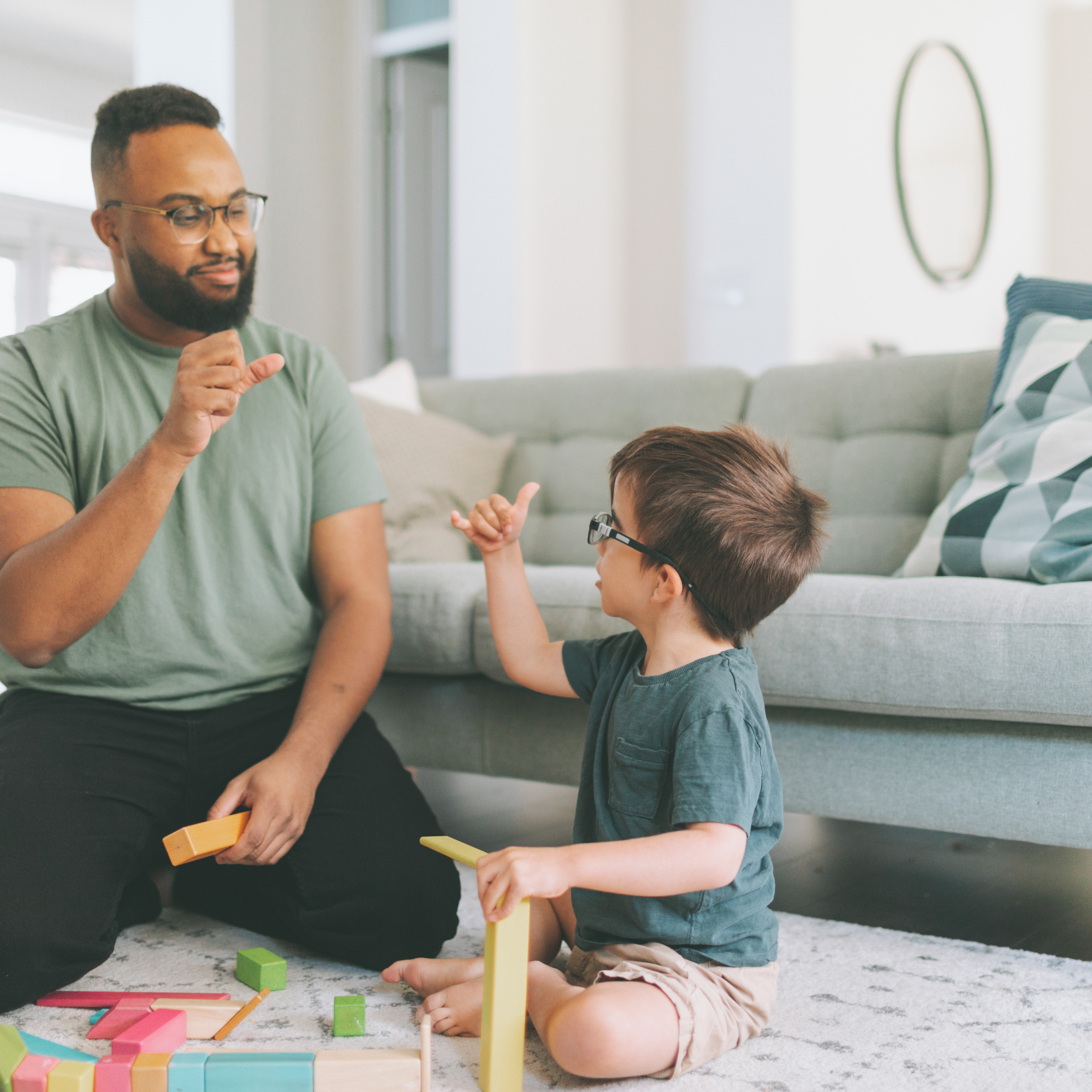In the last 2 blog posts of this series, we discussed Gestalt Language Processing vs. Analytic Language Processing and how to tell if your child is a Gestalt Language Processor (GLP). Make sure to go back and read those first if you have not already! Now that we have some background information, we are going to start discussing the different stages of Gestalt Language Processing. We start with Stage 1.
What is Stage 1 of Gestalt Language Processing?
Individuals in Stage 1, primarily communicate using “delayed echolalia.” Delayed echolalia, also known as scripting or using gestalts, is the repetition of a message that was previously heard either from a song, movie, or another person. These gestalts are exact repetitions of the original messages. They often even contain the same rhythm or intonation that the child heard in the original message. Some of these gestalts may be intelligible the first time you hear them. Others may sound like “jargon,” but the meaning may be determined after some investigative work. At times these scripts may appear to be relevant to the context or play, but more than likely they may also require some investigative work to determine the meaning.
If my child is communicating in Stage 1 how can I best support them?
- First and foremost, we should acknowledge any and all communication attempts (even those we don’t understand)! In the past, some have been told to ignore echolalia and scripts as they do not serve a purpose. We have since learned that the opposite is actually true! Echolalia is a form of communication! When an individual communicates using echolalia, we should validate them and acknowledge that we hear them. This can be as simple as a smile or a nod. It could also include an encouraging or relevant comment, such as “That’s so cool!”
- Another way to acknowledge the gestalt is to join in and/or repeat the gestalt. For instance, if your child is singing “Happy Birthday” or “Wheels on the Bus” join in! Join in even if it appears as though the song has nothing to do with the current activity. If your child says, “Chase is on the case” repeat back to them “Chase is on the case!” If you are only able to understand part of the gestalt or the gestalt is really long, it is also okay to repeat part of the message. By joining in or repeating the message back, we are showing the individual that we are listening, we hear them, and we care about what they have to say! Of note, some individuals do not like it if you join in or repeat them. This can be for many different reasons and is fairly common. If it was clear that your child did not like your addition to their script, stick to the tips mentioned in #1 above.
- The next step is to keep track of gestalts and investigate their meanings. There are a few options for this. You could keep a written list of the things you hear or type them in a document too. Other helpful information to include is what your child was doing/saying when you heard the gestalt. As we have discussed a few times, often scripts do not appear to be relevant to a child’s current activity. For example, they may come up to you and sing “Happy Birthday” when it is no one’s birthday. At first listen, this may be confusing, but you may start to identify a pattern. Maybe they do this every time they are hungry and asking for a snack. It could be that on their last birthday they were super hungry, and they finally got to eat as the cake was being brought to them and people were singing. Now “Happy Birthday” = “I’m hungry.” This can even work with gestalts that you cannot understand. You may be surprised that what you thought was “jargon,” is actually a pattern of sounds that your child consistently says, and it most likely has meaning to them too!
- Our goal for GLPs is to help them work through the stages of gestalt language processing and eventually form sentences of their own. The first way we target this is to model new gestalts that they can use! The goal gestalts that you pick will vary depending on the child and what is important to them. Your child’s SLP can help you determine which are best! After picking out a few, incorporate them into your daily routines whenever possible. We are not forcing the child to repeat these lines back to us or specifically teaching them. Instead, we are modeling them throughout our routines whenever relevant and fitting.
This is just a brief overview of Stage #1. If you have any questions, please reach out. We would love to help! Next, we will be moving on to discuss Stage #2!
-Hannah

